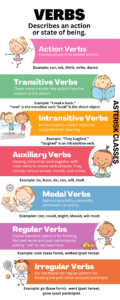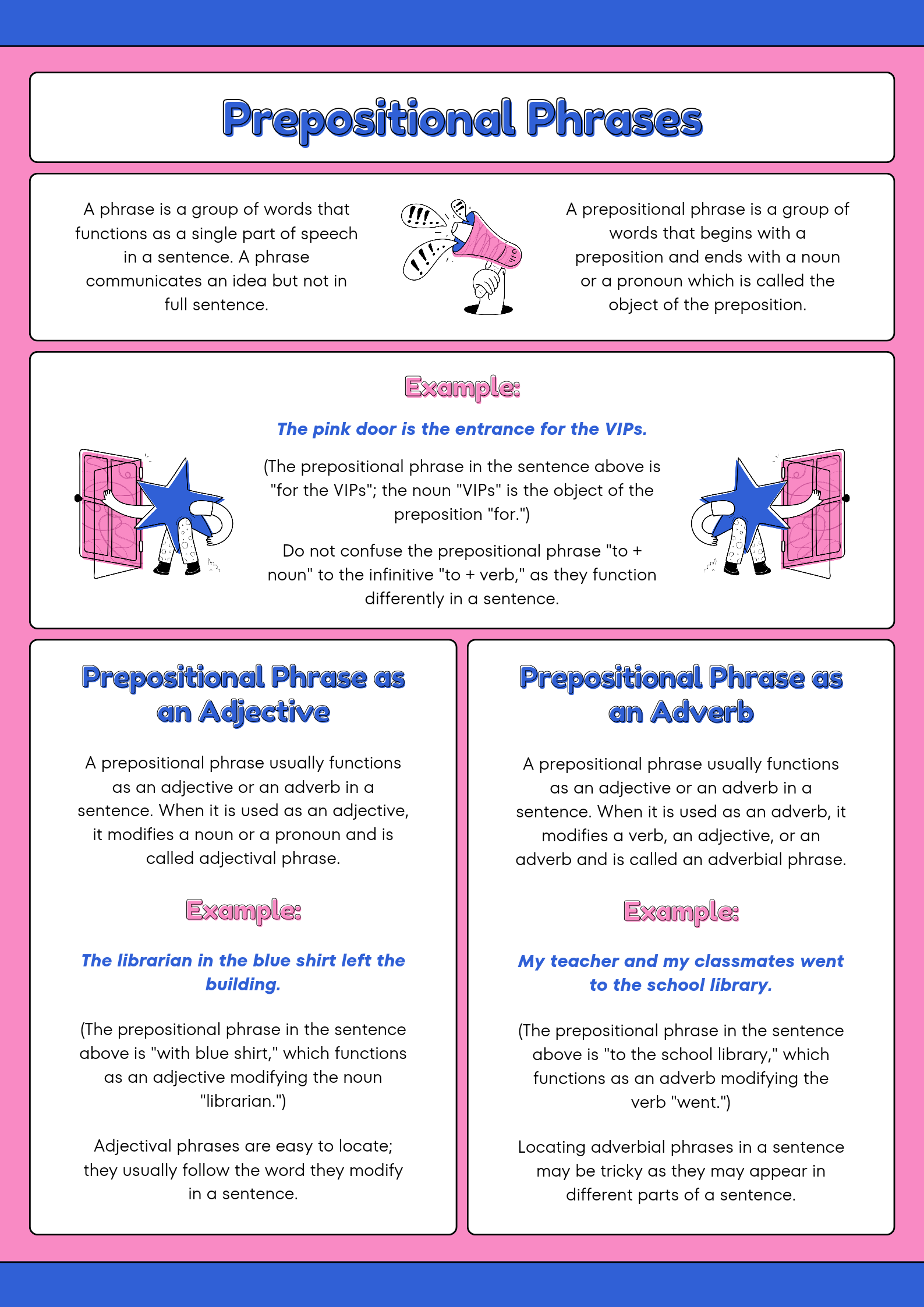Verbs are fundamental elements of language that describe an action, occurrence, or state of being. They are different Types of Verbs that are the engines of sentences, giving motion and direction to the subjects and objects they connect. In this blog post, we will delve into various types of verbs with examples to illustrate each category.
Types of Verbs
 >
>Action Verbs
Action verbs express physical or mental actions. They tell us what the subject of a sentence is doing.
Examples:
- She runs every morning.
- They eat lunch together.
- He thinks about the problem.
- I write letters to my friends.
- We dance at the party.
Transitive Verbs
Transitive verbs require a direct object to complete their meaning. They transfer the action from the subject to the object.
Examples:
- I read a book.
- She plays the piano.
- They watch a movie.
- He paints the fence.
- We eat dinner.
Intransitive Verbs
Intransitive verbs do not require a direct object to complete their meaning. The action stays with the subject.
Examples:
- They laughed loudly.
- She sleeps soundly.
- He cries often.
- We swim regularly.
- The baby smiles adorably.
Auxiliary Verbs
Auxiliary verbs, also known as helping verbs, work together with main verbs to create verb phrases. They help convey various tenses, moods, and voices.
Examples:
- She is singing.
- They have finished.
- He does know the answer.
- We can help you.
- I will go to the market.
Modal Verbs
Modal verbs express possibility, necessity, permission, or ability. They add meaning to the main verbs they accompany.
Examples:
- You can achieve your goals.
- She could arrive soon.
- They might visit us.
- He should study harder.
- We must leave now.
Regular Verbs
Regular verbs follow standard patterns for forming the past tense and past participle by adding “-ed” to the base form.
Examples:
- Walk (base form), walked (past tense).
- Talk (base form), talked (past tense).
- Play (base form), played (past tense).
- Work (base form), worked (past tense).
- Cook (base form), cooked (past tense).
Irregular Verbs
Irregular verbs do not follow the regular pattern for forming the past tense and past participle. Their forms need to be memorized as they often change entirely.
Examples:
- Go (base form), went (past tense), gone (past participle).
- See (base form), saw (past tense), seen (past participle).
- Eat (base form), ate (past tense), eaten (past participle).
- Take (base form), took (past tense), taken (past participle).
- Give (base form), gave (past tense), given (past participle).
Conclusion
Understanding the different Types of Verbs and how they function in sentences enhances our ability to communicate clearly and effectively. By recognizing the roles that action, transitive, intransitive, auxiliary, modal, regular, and irregular verbs play, we can construct sentences that are not only grammatically correct but also rich in meaning and expression.
